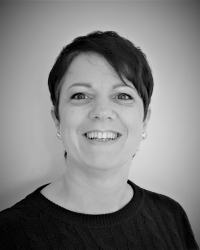The gift of creativity and how it heals the silent voice
If I asked you how creative you are what would your answer be? Let me guess. I suspect at least some of you reading this will have thought similar to, “Not very! I can’t draw and I hated art at school.” Would that be right?

What if I said that regardless of your memories of school, you are creative and that that creativity could be the gift to helping you, or someone else, to understand and manage daily stressors, painful experiences and mental health issues?
When a client walks through the door for the first time, there is a moment for me when I visualise them in their life. A picture is painted in my mind's eye of who this person is and the story they are about to share with me. In those first few moments I have used my creativity, I have used my imagination.
We humans are incredibly lucky people to have imagination and to be able to play with, and to create with it. To visualise an outfit or a project at work, to having the ability to plot a new landscape in the garden. How wonderful to have such a skill.
We use our creative skills in so many ways, including singing, dancing, gardening, crafting, painting... the list goes on. But the most remarkable thing about using a creative skill is the impact it has on our mental health. By immersing ourselves into the creative world, we place ourselves into a state of mindfulness, the rewards of allowing yourself to connect creatively are huge.
Did you know if you use creativity regularly it will alter your moods? Our brain function alters when we perform creatively in the same way it does when we meditate, due to the mindful place we find ourselves in. This creative, meditative state decreases feelings of anxiety, improves our immunity and helps to lower blood pressure and heart rate. Great, right?

The power of creativity
One other huge reward creativity can give, is to allow us to have a voice when we do not have the ability to verbalise how we feel. Creativity can heal the silent voice. Often, I witness this reward in my counselling practice. When a client sits, unable to express and verbalise their emotions and feelings, I may well gently introduce creative exercises into the therapeutic relationship if I feel it fits the client well.
Using different media, from paints to fairytales, there can be a transformation. Often, the client is surprised by how comfortable and easy it is to engage creatively, and for the first time is able to acknowledge, understand and accept their story. I am constantly humbled and honoured when witnessing this with a client. It is a true reward for us both.
An example of a simple exercise I used with a client was to get them to use their five senses. I didn’t introduce the exercise, and instead, I quietly and naturally allowed it to enter the room and let it do its work. The client was adamant that they were so disconnected from feelings, that they simply couldn't tell if they knew what they were, nor verbalise how they felt. I asked, "Do you feel happy?", to which they answered, “I think so, but I don’t know what happiness is”.
Nearby, I had pens, paint, art paper and scraps of paper with various pictures on. During this session, I asked them to choose what colour they associate with happiness. They chose yellow and orange, proceeding to paint a very large sun. I asked, "What sound is happy?".
They picked up a picture of a bird singing and children laughing and placed it down under their sun. I asked, "If you could touch happiness, what would you touch?". They picked up a picture of a tree, explaining how they loved the textures of different trees and plants.
"What about the smell, what would happiness smell like to you?" They placed pale blue dots along the bottom of their picture and told me it was the bluebells in the woods. They loved both the sweet smell of the plant and the earthiness of the woodland.
Finally, I asked, "If happiness could be tasted, how would it taste?" Immediately they answered, "Chocolate". It was then they had their lightbulb moment. The glint in the eyes, the smile on their face. They said, "This is what makes me feel happy. A walk in the woods on a spring day with my children".

Suddenly, through these creative actions, they realised they could feel happiness. They knew what happiness meant to them, and could now express these feelings through creativity. Just because they couldn't verbalise the feeling, didn't mean they couldn't feel it. And what a treat I had witnessed.
We worked on other feelings too, and a whole collection of stories, decorated boxes and painted pictures emerged over the weeks. What a gift we have as humans, having the ability to be creative and actually, to use it to help us heal.
So, the next time you think you are not creative, remember, you are! You have a whole hidden skillset that can help you and help others, and that can heal you and heal others. You may need a little encouragement and the right creativity, but it's in there wanting to work its magic, it's waiting for you!

Find a therapist dealing with Art therapy/Art psychotherapy
All therapists are verified professionals
